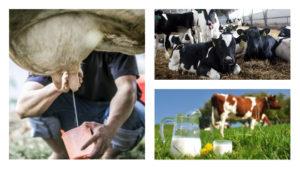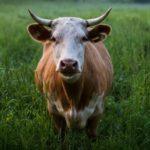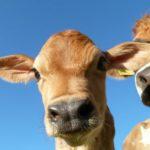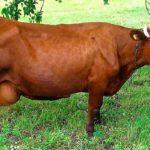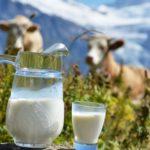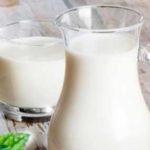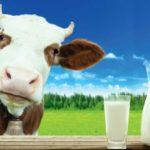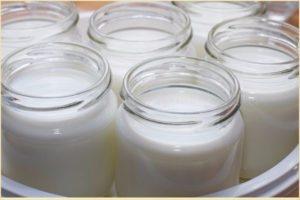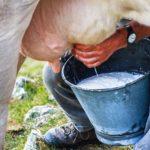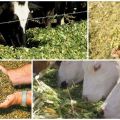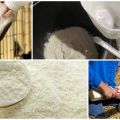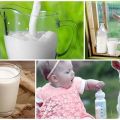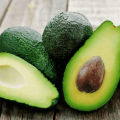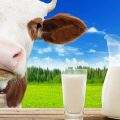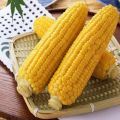The chemical formula of milk and the table of substances in the composition per 100 grams, temperature
Cow's milk is a valuable food product containing a lot of bioactive substances: proteins, fats, vitamins, enzymes, and mineral elements. In total, the product contains about 200 compounds that have a positive effect on the human body, especially on children. The chemical composition and calorie content of milk depend on the quality of feeding and the content of the cow.
Composition of cow's milk
The concentration of bioactive substances in the composition of cow's milk is determined by the breed of cattle, age, physical condition, past diseases, quality of care and nutrition. The basis of the product is water, lactose, protein, milk fat, a complex of vitamins and minerals.
Vitamins and elements
The vitamin complex contained in the valuable product ensures the full functioning of the body, cell growth and tissue development.
The table shows the amount of nutrients included in the milk in terms of mg per 100 grams.
| Vitamins | ||
| thiamine (B1) | participates in the synthesis of digestive juice, helps the absorption of nutrients | 0,11 |
| riboflavin (B2) | stimulates metabolism, accelerates energy production | 0,45 |
| niacin (B3) | supports the full functioning of the nervous system and the digestive tract | 0,26 |
| pantothenic acid (B5) | affects metabolic processes, participates in the formation of erythrocytes | 0,88 |
| pyridoxine (B6) | participates in fermentation reactions, accelerates the absorption of amino acids | 0,09 |
| folic acid (B9) | positively affects the functional state of the nervous system | 0,5 |
| cyanocobalamin (B12) | accelerates DNA synthesis, essential for the formation of red blood cells | 1,07 |
| ascorbic acid (C) | has an antioxidant effect, stimulates protein metabolism, participates in the synthesis of collagen and carnitine | 0,5 |
| retinol (A) | strengthens the immune system, has a positive effect on the functioning of the organs of vision | 0,07 |
| calciferol (D) | prevents rickets and osteoporosis, helps calcium to be absorbed in the body | 0,1 |
| tocopherol (E) | maintains the functional state of internal organs, has a powerful antioxidant effect, extinguishes inflammatory processes | 0,15 |
| phylloquinone (K) | essential for protein synthesis and blood coagulation processes, supports metabolism in bone tissue | 0,0005 |
| mineral elements | ||
| calcium | structural element of skeletal and dental tissues | 123 |
| phosphorus | participates in the construction of bone tissue | 95 |
| magnesium | ensures the flow of many enzymatic processes | 12 |
| potassium | supports the functioning of the nervous system and the contractile function of muscles | 0,15 |
Cow's milk also contains copper, sodium, manganese and iron, but the percentage of these trace elements is negligible.
Lactose
Milk sugar determines the pleasant sweetness in the taste of milk. But for many people, lactose is an allergen that makes it impossible to consume whole cow's milk. Lactose is the first and only carbohydrate consumed by a calf in the first weeks of life.
No other non-dairy product contains this sugar, so it is extremely important that young animals receive a maternal product to strengthen their immunity.
In the human digestive tract, lactose is broken down by almost 100% thanks to the enzyme lactase, without which the consumption of milk would cause poisoning in an adult. The average caloric value of lactose is 3.8 kcal per 1 g. This is less than sucrose.
Characteristics of the action of lactose in the human body:
- sugar, once in the digestive tract, is slowly broken down;
- the bacterial microflora of the colon synthesizes lactic acid;
- lactic acid is a preservative that prevents decay.

Milk fat
If you look under a microscope, you will notice that the surface of milk consists of the smallest droplets of fat - this is milk fat. When milk stands at room temperature, droplets rush from the thickness of the liquid to the surface, thus forming cream, according to the thickness of the layer of which the farmers approximately determine the fat content of the product.
When exposed to heat and whipped butter, fat droplets merge into larger structures.
Milk fat contains more than 20 fatty acids, which give products a mild taste. Caloric content - 9 kcal per 1 g, digestibility - almost 100%. Fat is sensitive to ultraviolet light, high temperature exposure, high humidity - under the influence of these factors, it gives the taste of milk bitterness.
Dairy products contain cholesterol, and its amount increases according to the increase in milk fat content:
- 1% product contains 3.2 mg;
- 2% - 10 mg;
- 3% - 15 mg.
The largest amount of cholesterol for an adult with a healthy vascular system is 500 mg per day, the permissible daily portion of 2% milk is as much as 5 cups. But if you are prone to atherosclerosis, you should not drink more than 3 cups of cow's milk per day.
Protein
The percentage of protein in milk is an indicator of the nutritional quality and metabolic rate of the cow. When protein and carbohydrate are contained in large quantities, provide the body with energy in abundance, then we are talking about the energy rise of the herd.
1 liter of natural product contains 33 g of protein, which consists of two compounds:
- Casein is a tasteless, odorless calcium salt. It looks like white crystals, is capable of coagulation, which makes it possible to obtain solid and liquid fermented milk products.
- Globulin and Albumin is a whey protein complex. Albumin is soluble in water; it precipitates on exposure to temperature. The globulin begins to coagulate at 70 ° C. These proteins are used to make a variety of dairy products.
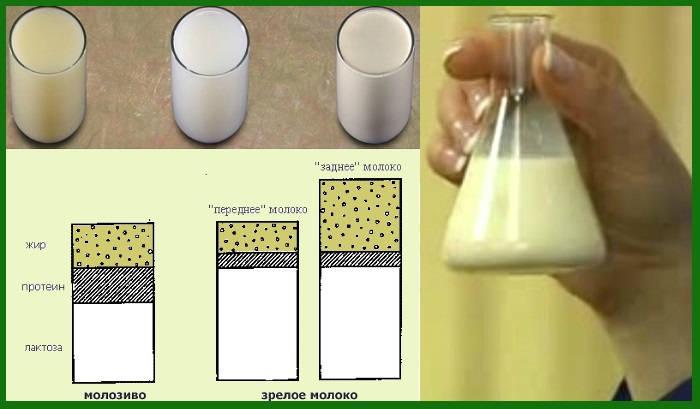
Chemical composition
In addition to proteins, fats, vitamins and minerals, milk contains substances that determine its properties and benefits: enzymes, hormones, acids, nitrogen-containing substances. In the first days after the birth of a calf, the mammary glands of a cow produce colostrum - a supernourishing cream-colored liquid that differs from milk in taste, acidity and composition. The calorie content of milk is low - about 65 kcal per 100 g. Nutritional value of the product:
- water - 87.5%;
- dry matter content - 12.5%;
- proteins - 3.3%;
- fats - 3.8%;
- carbohydrates - 4.7%;
- ash particles - 0.7%.
Nitrogen-containing compounds in cow's milk are urea, creatine, ammonia, uric acid. Their concentration does not exceed 0.02 percent, but in summer, with pasture feeding, it rises to 0.04%.
Of the enzymes, the composition contains phosphatase, amylase, catalase, lipase, reductase. 1 ml of the product contains up to 10 thousand bacteria, and after milking, the amount of bacterial microflora increases by 100-300 thousand per 1 ml. 1 liter of milked milk contains 60-80 cm3 gases that can be divided into fractions: oxygen - about 10%, nitrogen - 30%, carbon dioxide - 60%. Gases evaporate during storage and heat treatment.
How cow's milk differs from goat's
The table shows the comparative characteristics of the nutritional value of goat and cow milk. The figures are calculated per glass of each product.
| Index | Goat | Cow |
| proteins, g | 9 | 8 |
| fat, g | 10 | 8 |
| carbohydrates, g | 11 | 13 |
| calcium,% | 33 | 20 |
| calorie content, kcal | 170 | 150 |
A goat product is considered better than a cow product, as it contains:
- lower percentage of milk fat per volume of water, which speeds up absorption;
- 25% less lactose concentration;
- 12% more calcium, 45% more retinol, 135% more potassium;
- the percentage of cholesterol is lower.
But cow's milk contains more B vitamins6, B9, B12... The temperature of fresh milk immediately after milking should be 25-30 ° C, if it is significantly higher, then mastitis or another inflammatory process in the body should be suspected in the cow.
